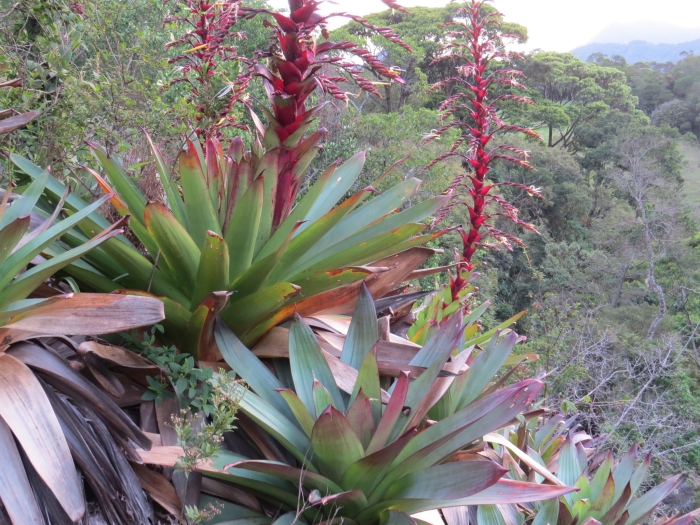Imperial Bromeliad
(Alcantarea imperialis)
Imperial Bromeliad (Alcantarea imperialis)
/
/

Victor Farjalla Pontes
CC BY 4.0
Image By:
Victor Farjalla Pontes
Recorded By:
Copyright:
CC BY 4.0
Copyright Notice:
Photo by: Victor Farjalla Pontes | License Type: CC BY 4.0 | License URL: http://creativecommons.org/licenses/by/4.0/ | Rights Holder: Victor Farjalla Pontes | Publisher: iNaturalist | Date Created: 2021-11-27T18:04:50-08:00 |

























Estimated Native Range
Summary
Alcantarea imperialis, commonly known as Imperial Bromeliad, is a large terrestrial bromeliad native to the rocky slopes of the Serra dos Órgãos in Rio de Janeiro, Brazil. This species is part of the Atlantic Forest biome, where it thrives in high-altitude, open areas that are often exposed to intense sunlight and periods of drought. It is a slow-growing plant that can take up to 40 years to reach maturity and produce its spectacular inflorescence, which is a towering spike of red flowers that can reach up to 10 feet tall. The leathery leaves of the Imperial Bromeliad can grow up to 5 feet long, forming a dramatic rosette that is capable of holding up to 30 liters of rainwater in its central tank.
The Imperial Bromeliad is highly valued in cultivation for its striking appearance and its ability to withstand dry conditions and full sunlight. It is often used as a focal point in tropical and subtropical gardens, and its water-holding tank provides a habitat for small aquatic organisms. In cultivation, it requires well-draining soil and can be grown in containers or as a landscape specimen. While it is relatively low-maintenance, it is susceptible to root rot if overwatered or planted in poorly draining soils. Due to its size and the length of time it takes to flower, it is best suited for larger spaces where it can be allowed to grow without constraints.CC BY-SA 4.0
The Imperial Bromeliad is highly valued in cultivation for its striking appearance and its ability to withstand dry conditions and full sunlight. It is often used as a focal point in tropical and subtropical gardens, and its water-holding tank provides a habitat for small aquatic organisms. In cultivation, it requires well-draining soil and can be grown in containers or as a landscape specimen. While it is relatively low-maintenance, it is susceptible to root rot if overwatered or planted in poorly draining soils. Due to its size and the length of time it takes to flower, it is best suited for larger spaces where it can be allowed to grow without constraints.CC BY-SA 4.0
Plant Description
- Plant Type: Succulent
- Height: 2-3 feet
- Width: 2-4 feet
- Growth Rate: Slow
- Flower Color: Purple, Red
- Flowering Season: Spring, Summer
- Leaf Retention: Evergreen
Growth Requirements
- Sun: Full Sun
- Water: Low
- Drainage: Fast, Medium
Common Uses
Border Plant, Drought Tolerant, Fire Resistant, Groundcover, Low Maintenance, Potted Plant, Rock Garden, Showy Flowers
Natural Habitat
High-altitude, open areas of the Atlantic Forest biome
Other Names
Common Names: Giant Bromeliad , King of Bromeliads
Scientific Names: Alcantarea imperialis , Alcantarea imperialis , Tillandsia blokii , Vriesea blokii , Vriesea gigantea , Vriesea imperialis , Vriesea imperialis ×.Morren , Vriesea imperialis ×.Morren ex
GBIF Accepted Name: